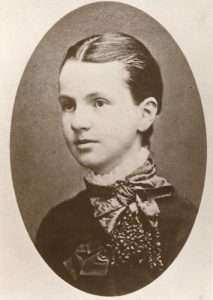Beginnings are important. They often act as a prologue, as it were, to the meaning of what follows.

Over past weeks we have pondered the meaning of Jesus’ life as described in the infancy narratives of Matthew and Luke. Right from the beginning, we are told, the birth of Jesus would demonstrate the Good News he would be for the poor; his coming would bring light to the nations and show the world the true path to peace. In the midst of suffering and hardship, the message that God is present with us enables us to find hope, no matter how dense the darkness.
So what of the birth of Mary MacKillop? This child who would prove to be pioneer in so many aspects of Australian religious and social history was born of migrant parents in the pioneer settlement of Melbourne on 15 January 1842. Her father, Alexander, had arrived from Scotland barely four years before, and had married another migrant, Flora McDonald, on 14 July 1840. At first, the family’s prospects looked good, but through a series of unfortunate happenings, Alexander soon lost his favourable social and financial standing, ‘due to a combination of his character, his lack of business sense and the fact that there were a lot of smarter people around.’[1] Nevertheless, Alexander was an intelligent, educated man, passionate for the rights of all, no matter what their background. It can be attributed to his foundational influence that his daughter, Mary, would later be instrumental in assuring in Australia and beyond the right of every child to an education. Her belief in a classless society would bring her grief, as it did her father, yet since it was based on an understanding of the God-given dignity of every human being, it was integrated into her whole way of life, her growth into sanctity.
Mary’s mother, Flora, was likewise a precursor of what her daughter would be. While she was pregnant, a priest had lent her a relic of the Holy Cross to wear until her child was born. ‘My name in religion is Mary of the Cross’, Mary would write to her in 1867. ‘No name could be dearer to me, so I must endeavour, not to deserve it – for I cannot – but at least I must try not to disgrace it.’[2] Having borne the cross in different sufferings throughout her life, Mary would, in our time, be acclaimed as ‘St Mary of the Cross MacKillop’.
It was to Flora, too, that Mary looked for an example of trust in God’s Providence and the search for God’s will. These would become the prominent aspects of Mary’s spirituality. ‘Dearest Mama’, she wrote, ‘you ever taught me to look up to and depend on Divine Providence in every trouble.’[3] In another letter she reminds her mother: ‘You used to tell me to love the Will of God – and to submit to it in all things. Your words still often ring in my ears and I bless God that they were my Mother’s words to me.’[4] …
Please continue reading below (from paragraph 5):
Mary MacKillop’s Birthday (PDF)
Mary Cresp rsj
Footnotes:
[1] Paul Gardiner, An Extraordinary Australian, Mary MacKillop, E. J. Dwyer, Sydney, 1993: p.15.
[2] Mary MacKillop, Letter to Flora, 21 August 1867, St Joseph’s Congregational Archives, North Sydney.
[3] Ibid.
[4] Mary MacKillop, Letter to Flora, 14 September 1869, St Joseph’s Congregational Archives, North Sydney.
